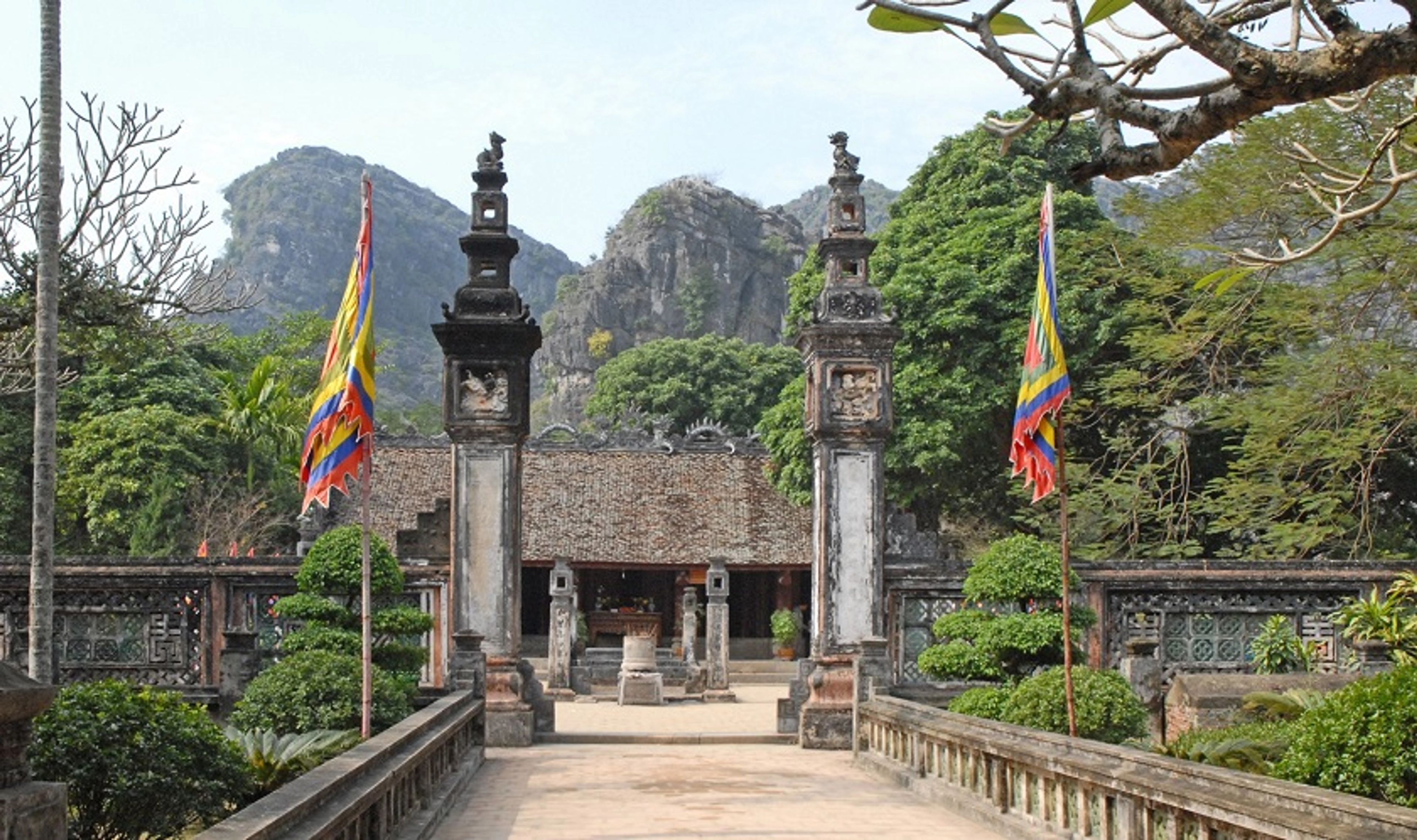

The Temples of King Dinh and King Le in the ancient capital of Hoa Lu, located in Hoa Lu District, Ninh Binh Province, are ideal destinations for exploring the rich historical heritage of Vietnam from the 10th century. These sites, dedicated not only to King Dinh, his parents, and his sons but also to various generals, are among the few remaining relics of this dynasty in Vietnam. Join BDATrip in experiencing and learning more about this historically rich area!
Situated in Truong Yen Commune, within the protected area of the national cultural and historical site, the ancient capital complex of Hoa Lu covers an area of 5 hectares. This site encapsulates significant cultural and historical structures from the Dinh, Early Le, and Ly dynasties, spanning over a thousand years of history.
The temples dedicated to King Dinh Tien Hoang and King Le are prominent structures built within this 5-hectare area at Yen Thuong village, east of Ma Yen Mountain. Remarkably, the tomb of King Dinh Tien Hoang is positioned on the peak of Ma Yen Son, overlooking a saddle-like mountain formation, symbolizing his role in quelling uprisings and protecting the nation.
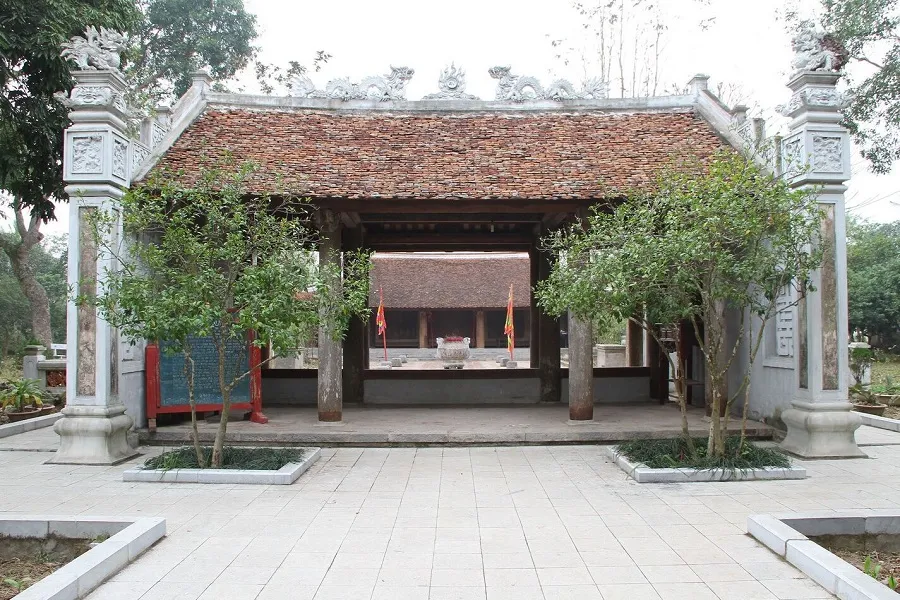
Traditionally, the temples of Kings Dinh and Le were constructed on the foundations of the old royal palace. When the capital was moved from Hoa Lu to Thang Long (now Hanoi) by the Ly dynasty, these remnants were left for the people to honor the national heroes Dinh Bo Linh and Le Hoan. Originally facing north towards Mount Ho and Mount Che, the temples were realigned to the east by provincial governor Bui Thoi Trung in the early 17th century after the Mac dynasty was replaced by the Le dynasty in 1600. A stele was erected in 1606 to commemorate this event, and in 1898, local elder Ba Kenh, also known as Duong Duc Vinh, collaborated with the community of Upper Truong Yen to renovate King Dinh's temple, elevating its foundation and adding a stone doorway, which shaped its current appearance.
The Temple of King Dinh Tien Hoang is a significant architectural and historical structure built on the site of the old royal palace of Hoa Lu. This temple serves as a place of worship for King Dinh Tien Hoang and his princes. Its design reflects a unique blend of traditional and innovative styles, with interior elements shaped like the Chinese character for "work" and exterior designs resembling the character for "country." The temple's pathways are designed in a square pattern, creating a symmetrically ordered environment.
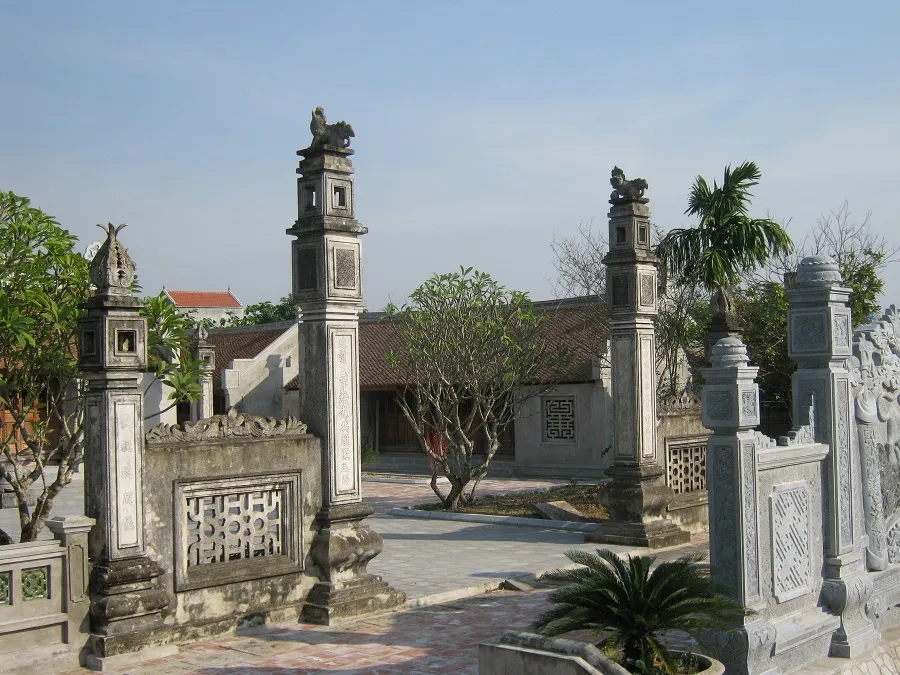
Recognized as a special national monument in 2012, King Dinh's Temple is not only an architectural icon but also a marker of important historical events. King Dinh Tien Hoang, having unified the regional lords, chose this site as the capital to leverage its strategic mountainous terrain for defense against northern invasions. Tragically, in 979, the king and his son Dinh Lien were assassinated by Do Thich. Following royal protocol, the temple was established in their hometown, continuing a long-standing tradition.
The temple preserves numerous valuable records praising the intelligence and strength of King Dinh Tien Hoang in uniting and establishing the nation. Legends about his childhood and generals such as Nguyen Bac and Dinh Dien also enrich the narrative of the temple.
Entering through the Ngọ Mon Gate, visitors are greeted by a three-section tiled roof, with a curved doorway featuring two cloud-entwined lion statues, symbolizing strength and majesty. Inside, the main courtyard displays a stone dragon bed flanked by two stone statues, radiating solemnity and artistic finesse. Each statue, carved in a robust pose, showcases the strength and unyielding spirit of the figures they represent.
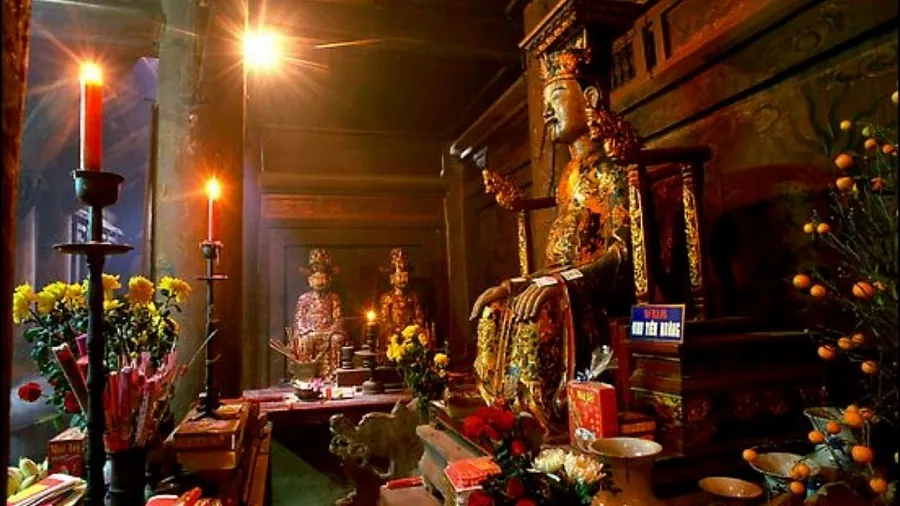
The Nghi Mon inner gate, featuring a three-row column structure, demonstrates the advanced building techniques of the era. On the right side of the temple complex is the ancestral hall honoring King Dinh's parents, and on the left is the Vong house, used for ritual discussions. The central area features a flower garden laid out in the shape of the character for "country," highlighting the external architectural theme.
The main temple consists of three halls: Bai Duong, Thien Huong, and Thuong Dien, each providing a sacred, profound space with characteristic architecture, enclosed to create a mysterious royal court. Together with the ritual objects and statues, this area not only serves as a spiritual destination but also showcases the strong development of sculpture art from the Later Le period, depicted through various vibrant dragon carvings.
Located just 300 meters from King Dinh Tien Hoang Temple, the King Le Temple, dedicated to King Le Dai Hanh, sits quietly in Truong Yen Ha village, Truong Yen Commune. Known locally as Lower Temple, it was built on the site of an old Hoa Lu palace, facing east with Mount Den as its backdrop, surrounded by the Dia Mountain range.
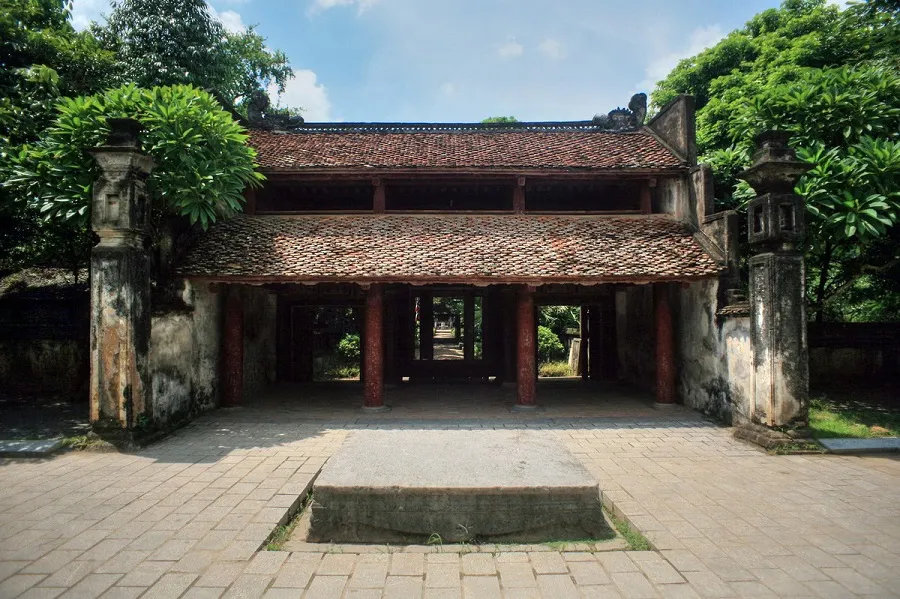
In the worship hall, a splendid gold-plated plaque reads "Truong Xuan linh tich" ("Traces of Truong Xuan Hall"). To the right, another plaque states "Duong than vu" ("Manifestation of divine military prowess"), accompanied by a pair of couplets: "Divine military power extends in all four directions, during prosperous times under the Tang and strong defense against the Cham. The sacred essence remains forever between the mountains and rivers," underscoring the temple's historical and cultural significance over centuries, celebrating the mythical stature and power.
Both the Temples of King Dinh and King Le are masterpieces of 17th-century wood carving art, representing the refined and intricate craftsmanship of traditional artisans. These temples stand as symbols of deep respect and gratitude that the people of Vietnam, particularly those from Ninh Binh, hold for the two kings who greatly contributed to the expansion and foundation of the nation.
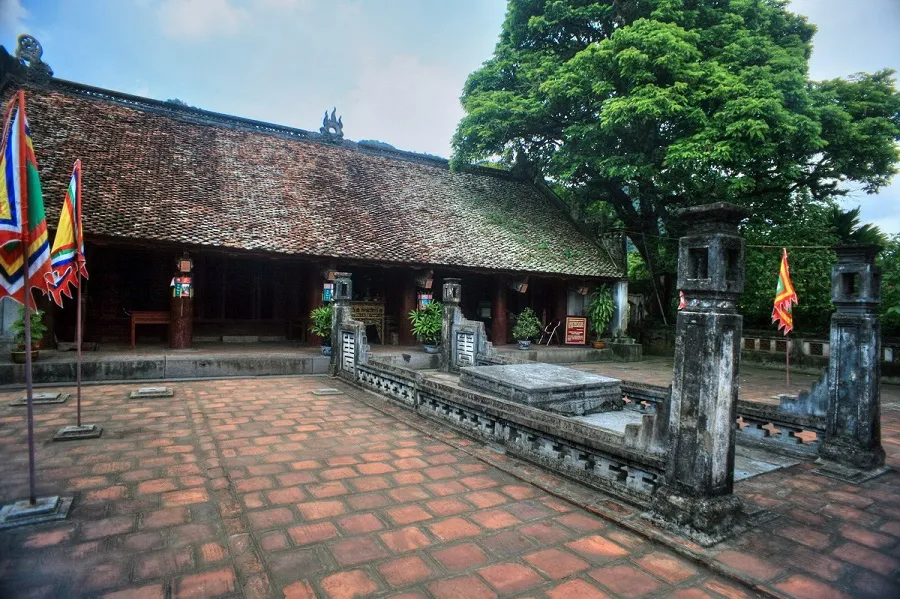
The Festival of King Dinh and King Le, also known as the Truong Yen Festival, is held annually at the old capital of Hoa Lu from the 8th to the 10th of the third lunar month. This festival attracts numerous local and international visitors to experience the vibrant spring atmosphere. Through this event, the festival not only honors the life and achievements of King Dinh Tien Hoang but also expresses deep respect and gratitude towards those who united the regional lords, unified the country, and established the foundation for Vietnam's first centralized monarchy.
Although not as extensively renovated as King Dinh's Temple, King Le's Temple has preserved many wooden carvings from the Later Le period, reflecting a simple yet meaningful appearance. The carvings in the worship hall demonstrate the dynamic display of wood carving art, preserving the cultural beauty of the past.
For those starting from Ho Chi Minh City, flying is the most practical option. You'll land at Noi Bai Airport, and from there, you can travel to Ninh Binh by limousine or hire a private car. The journey covers approximately 100km and takes about 2 hours.
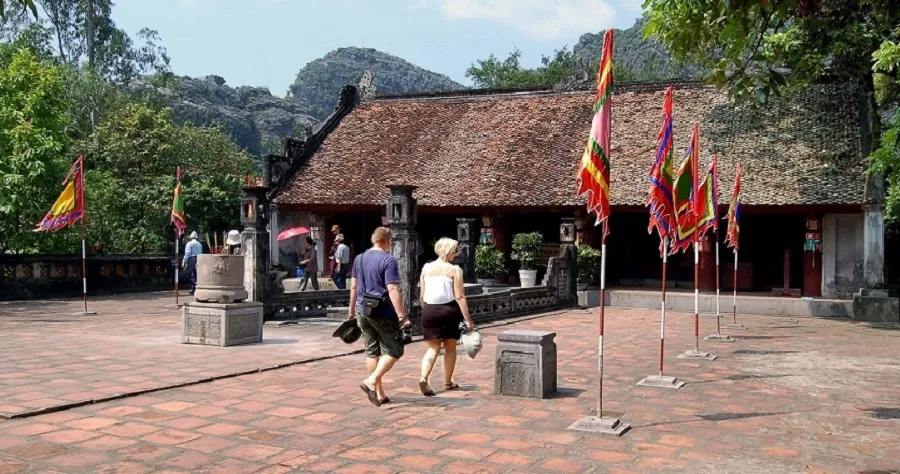
For those in Hanoi, there are three options to reach Ninh Binh:
- Train: Tickets range from 90,000 to 200,000 VND, depending on the class and type of seat. There are two daily services, one at 6:30 AM and another at 7:20 PM. Upon arrival at Ninh Binh Station, you can make your way to the old capital of Hoa Lu by taxi, motorcycle, or motorbike taxi.
- Bus: Tickets cost around 80,000 VND. The journey takes about 2.5 hours, including rest stops. Buses depart from Giap Bat Bus Terminal and run directly to Ninh Binh, providing a convenient and easy travel option.
- Motorcycle: If traveling by motorcycle, you'll follow the old National Highway 1A, passing through Thuong Tin and stopping at Phu Ly city, Ha Nam province. Using Google Maps for navigation, you'll easily reach the vibrant and colorful city of Ninh Binh. From there, it's just an additional 7km to the Temples of King Dinh and King Le.
- Limousine: Many companies now offer high-quality limousine services to Ninh Binh, with tickets priced between 250,000 and 350,000 VND. This service includes door-to-door pickup and drop-off, ensuring maximum convenience and comfort.
When visiting the spiritually significant and historically rich sites of King Dinh and King Le Temples, along with King Dinh Tien Hoang Temple, BDATrip offers several important tips to enhance the solemnity and significance of your tour:
- Dress Code: Wear modest, respectful clothing to match the solemn nature of the temples.
- Behavior: Move gently, speak softly, and maintain order. When offering incense, show sincere reverence for the kings who have made significant contributions to the nation.
- Environmental Responsibility: Always dispose of trash in designated areas to avoid polluting or disrupting the temple grounds.
- Compliance with Regulations: If you are part of a tour group, follow the guidance of the management staff or tour guides closely. This helps you understand the rules that must be observed during your visit.
- Deeper Exploration: Do not hesitate to engage in conversations with the elders in the management board of the heritage site to gain deeper insights into the historical, cultural, and architectural values of the location.
- Map Preparation: If you are touring alone, be sure to have a map handy for easy navigation and to ensure you do not miss any important sights.
Exploring the Temples of King Dinh - King Le is not just a travel itinerary but also an opportunity to learn more about the cultural and historical heritage preserved by our ancestors. Prepare thoroughly and enjoy your trip to Ninh Binh, one of Vietnam's regions rich in tradition and history.
Some attractive tourist destinations in Ninh Binh:
Copyright © 2022 BDATrip.com | All rights reserved.